 Digital civil liberties organisation, The Electronic Frontier Foundation (EFF) has announced the next stage in its ongoing challenge to the US Federal Communications Commission’s “Broadcast Flag” technology mandate (first mentioned by us in Nov.03).
Digital civil liberties organisation, The Electronic Frontier Foundation (EFF) has announced the next stage in its ongoing challenge to the US Federal Communications Commission’s “Broadcast Flag” technology mandate (first mentioned by us in Nov.03).
The organisation has released a step-by-step guide called “HD PVR Cookbook” which teaches people how to build a high-definition digital television (HDTV) recorder, unaffected by the technological constraints of the Broadcast Flag.
The EFF is also encouraging people to protest against the FCC rule by holding Build-Ins. These are gatherings around the country to build unfettered HDTV recorders and experience first-hand the kind of innovation stifled by the government mandate.
The Broadcast Flag is an application that places copy controls on DTV Signals in an attempt to stop people making digitally perfect copies of television shows and redistributing them.
It comes in two parts: The first is a tiny bit of data (the flag) that is inserted into a station’s digital stream. It doesn’t actually do anything to the video signal itself. It’s simply there, to tell digital receivers about the protection level of the content.
The second part of the technology comes into play from July 1st when all new devices will be required to protect marked content with an “authorised technology”.
This has the aim of limiting one’s ability to distribute the content via the Internet or other mass methods while simultaneously allowing the consumer unfettered access to his or her content.
Now that sounds pretty reasonable, but as engadget points out, this technology may end up preventing consumers from making perfectly legitimate personal copies of broadcasts.
Moreover, it may outlaw the manufacture and importing of a whole host of TiVo-like devices that send DTV signals into a computer for backup, editing, and playback.
The EFF is inviting individuals to fight back by hosting a Build-In before the Broadcast Flag goes into effect on July 1, 2005.
EFF held the first Build-In at its offices in late January, inviting a number of local programmers, TV fans, and bloggers to try out their ‘Cookbook’ and ‘test-bake’ their own HDTV recorders using standard computers equipped with HD tuner cards.
The results were impressive: the dozen attendees created five working PVRs over the course of the day, using the KnoppMyth distribution of the open-source MythTV software package.
Groups who want to host their own Build-Ins can contact EFF for a “Throw Your Own Build-In” kit, which includes a hard copy of the HD PVR Cookbook, a KnoppMyth CD-ROM, and (of course!) free EFF t-shirts and stickers.
EFF releases its technological challenge to the Broadcast Flag on the same day that the organisation and other civil liberties groups challenge the FCC in the courtroom. In ALA v. FCC, the groups – including the American Library Association and Public Knowledge – argue that the FCC has overstepped its authority in mandating the Broadcast Flag and that the rule should be struck down.
“Even as we’re suing the FCC to stop this interference with technological innovation, we’re also helping television watchers to get off the couch and build their own fully capable PVRs,” said EFF Special Projects Coordinator Wendy Seltzer, who organized the Build-In. “Every MythTV built helps demonstrate the creative development that may be cut off by bad regulation.”
The Electronic Frontier Foundation
HD PVR Cookbook
Photos of the EFF Build-In (EFF)
Will the Broadcast Flag Break Your TiVo? (Slate Mag)
Federal Communications Commission
 In a synergistic embrace, BSkyB and Barclaycard have signed an agreement which will see them join forces to launch a Sky-branded credit card later this year.
In a synergistic embrace, BSkyB and Barclaycard have signed an agreement which will see them join forces to launch a Sky-branded credit card later this year.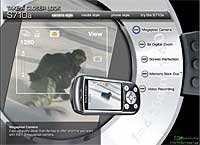 We know that camera phones are getting better and that the Ericsson S710a Camera Phone has a better one than most, but this over-excited PR bonanza from Sony has rubbed us up the wrong way.
We know that camera phones are getting better and that the Ericsson S710a Camera Phone has a better one than most, but this over-excited PR bonanza from Sony has rubbed us up the wrong way.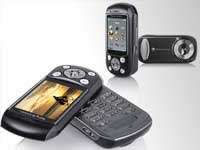 Now we like the Sony Ericsson S710a phone. It’s a great phone.
Now we like the Sony Ericsson S710a phone. It’s a great phone.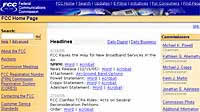 A US appeals panel has challenged new federal rules which require certain video devices to incorporate technology designed to prevent copying digital television programs and distributing them over the Internet.
A US appeals panel has challenged new federal rules which require certain video devices to incorporate technology designed to prevent copying digital television programs and distributing them over the Internet. Russian prosecutors are considering filing criminal charges against a Web site that offers cheap music downloads, the music industry’s global trade group has said.
Russian prosecutors are considering filing criminal charges against a Web site that offers cheap music downloads, the music industry’s global trade group has said.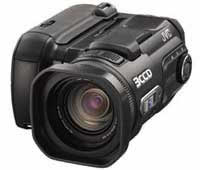 The diminutive JVC GZ-MC500 comes with three 1/4.5-inch CCD that records high-quality MPEG-2 video onto CompactFlash microdrives, with a 4 gig card, capable of storing up to an hour of “DVD-quality” video.
The diminutive JVC GZ-MC500 comes with three 1/4.5-inch CCD that records high-quality MPEG-2 video onto CompactFlash microdrives, with a 4 gig card, capable of storing up to an hour of “DVD-quality” video.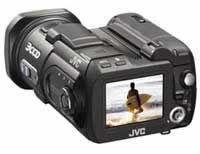 Translated into a language approaching English, this means that the camera is able to produce thumping great 5-megapixel with a resolution of 2560 x 1920 pixels still shots. This is second only to Samsung’s latest Duocam camcorder.
Translated into a language approaching English, this means that the camera is able to produce thumping great 5-megapixel with a resolution of 2560 x 1920 pixels still shots. This is second only to Samsung’s latest Duocam camcorder. JVC have wheeled out a veritable cavalcade of new, full-featured multi-format DVD recorders, including a series of combination units that combine DVD recording with hard disk drive (HDD), VHS and Mini DV recording.
JVC have wheeled out a veritable cavalcade of new, full-featured multi-format DVD recorders, including a series of combination units that combine DVD recording with hard disk drive (HDD), VHS and Mini DV recording.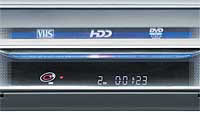 Those with VHS collections chaotically labelled with a load of indecipherable scrawling, may enjoy the auto thumbnail creation feature, which automatically creates video thumbnail chapter references when dubbing to DVD.
Those with VHS collections chaotically labelled with a load of indecipherable scrawling, may enjoy the auto thumbnail creation feature, which automatically creates video thumbnail chapter references when dubbing to DVD.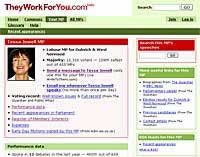 Politicians, eh? Despite electing the slippery blighters, it can be next to impossible to work out what they’re doing – or not doing – on your behalf.
Politicians, eh? Despite electing the slippery blighters, it can be next to impossible to work out what they’re doing – or not doing – on your behalf. Since its June 2004 launch, the site’s feature list is constantly updated. One of the recently additions is to have the system alert you, via email, whenever your MP speaks – driving the information to you, rather than you having to check the site.
Since its June 2004 launch, the site’s feature list is constantly updated. One of the recently additions is to have the system alert you, via email, whenever your MP speaks – driving the information to you, rather than you having to check the site. Video Networks Ltd (VNL) has announced a range of enhancements to the TV functionality of its HomeChoice service, claimed to improve the overall customer experience.
Video Networks Ltd (VNL) has announced a range of enhancements to the TV functionality of its HomeChoice service, claimed to improve the overall customer experience.